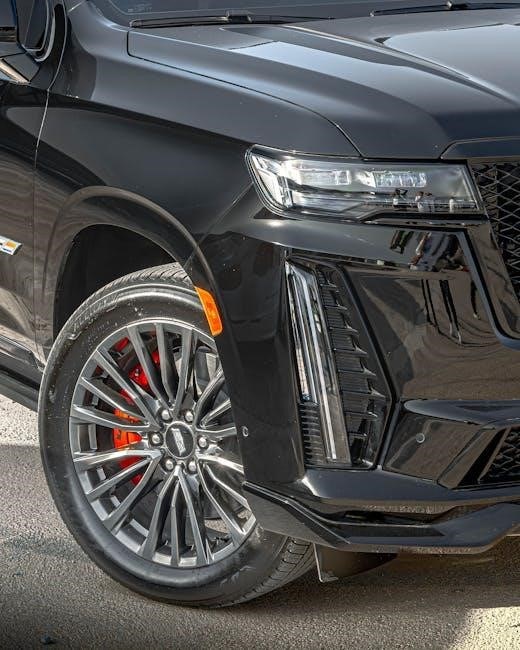vehicle loan agreement pdf
Summary
Get a free, easy-to-use vehicle loan agreement template. Perfect for lenders and borrowers. Download your professional PDF now!

A vehicle loan agreement is a legally binding document outlining the terms for lending and borrowing funds to purchase a vehicle, ensuring clarity and protection for both parties involved․
1․1 Definition of a Vehicle Loan Agreement
A vehicle loan agreement is a legally binding contract between a lender and a borrower that outlines the terms and conditions for borrowing funds to purchase a vehicle․ It serves as a formal document that details the obligations of both parties, ensuring clarity and mutual understanding․ The agreement typically includes essential information such as the loan amount, interest rate, repayment terms, and the vehicle’s specifications․ It also establishes the lender’s security interest in the vehicle until the loan is fully repaid․ This agreement is designed to protect both the lender and the borrower by providing a clear framework for the loan transaction, preventing potential disputes, and ensuring compliance with legal requirements․ By defining the rights and responsibilities of both parties, a vehicle loan agreement plays a crucial role in facilitating a smooth and secure lending process․
1․2 Purpose of a Vehicle Loan Agreement

The primary purpose of a vehicle loan agreement is to establish a clear and legally binding framework for the lending and borrowing process․ It ensures that both the lender and borrower understand their obligations, rights, and responsibilities․ The agreement outlines the loan amount, interest rate, repayment schedule, and the terms under which the lender may repossess the vehicle if payments are missed․ This document also serves to protect both parties by providing a formal record of the transaction, which can be referenced in case of disputes․ Additionally, it ensures compliance with financial regulations and legal standards, safeguarding the interests of both parties․ By clearly defining the terms, a vehicle loan agreement facilitates a transparent and secure lending process, benefiting both the lender and the borrower․ Its purpose is to create a mutually understood and enforceable contract that governs the loan transaction effectively․

Key Components of a Vehicle Loan Agreement

A vehicle loan agreement includes essential details like vehicle description, loan amount, interest rate, repayment terms, and borrower responsibilities, ensuring a transparent and legally binding contract for both parties involved․

2․1 Vehicle Details
The vehicle loan agreement must include precise details about the vehicle to ensure clarity and avoid disputes․ This includes the make, model, year, color, and Vehicle Identification Number (VIN), which uniquely identifies the vehicle․ Additionally, the agreement should specify the vehicle’s current mileage and any existing damage noted during the inspection․ Accurate vehicle details are crucial for establishing the asset’s value and ensuring the loan is secured against the correct property․ Including these specifics helps prevent misunderstandings and provides a clear reference point for both the lender and borrower․ Proper documentation of the vehicle’s condition and specifications also protects both parties in case of future disputes․ By clearly outlining the vehicle’s details, the agreement ensures transparency and accountability, making it a fundamental component of the loan contract․ This section is essential for validating the loan’s terms and securing the lender’s interest in the vehicle․
2․2 Loan Terms and Conditions
The loan terms and conditions outline the specific rules and obligations for both the lender and borrower․ This section specifies the total loan amount, interest rate (fixed or variable), repayment period, and monthly payment amounts․ It also details any fees associated with the loan, such as origination fees or late payment charges․ The agreement will clarify whether the interest rate is fixed or variable and how it may change over time․ Additionally, it will state the consequences of missing payments, including potential late fees or default actions․ The terms may also include conditions for early repayment, such as penalties or incentives․ This section ensures both parties understand their responsibilities and the expectations for fulfilling the loan obligations․ By clearly defining the loan’s terms and conditions, the agreement provides a framework for a smooth and legally binding transaction․ Properly outlining these details helps prevent conflicts and ensures compliance with financial regulations․
2․3 Payment Schedule
The payment schedule outlines the timing and amount of each loan installment, ensuring both parties are aware of their obligations․ It specifies the due dates for payments, the duration of the repayment period, and the exact amount to be paid each month․ This section may also include information on grace periods for late payments and any associated late fees․ The payment schedule is structured to provide clarity and ensure the borrower can plan their finances accordingly․ It may also detail how payments are applied, such as specifying the portion allocated to principal and interest․ This section is crucial for maintaining transparency and ensuring the loan is repaid in a timely manner․ By clearly defining the payment schedule, the agreement helps prevent misunderstandings and promotes a smooth repayment process․ Proper documentation of the payment terms is essential for both the lender and borrower․
2․4 Security Interest in the Vehicle

A security interest in the vehicle is a critical component of the loan agreement, granting the lender legal rights over the vehicle until the loan is fully repaid․ This provision ensures the lender can reclaim the vehicle if the borrower defaults on payments․ The agreement typically includes a description of the vehicle, such as its make, model, year, and VIN, to clearly identify the collateral․ The borrower agrees to maintain the vehicle in good condition and may be required to provide proof of insurance to protect the lender’s interest․ The security interest is usually recorded in public records, such as with the Department of Motor Vehicles (DMV), to notify third parties of the lender’s rights․ Once the loan is satisfied, the lender releases the security interest, and the borrower gains full ownership of the vehicle․ This clause balances the lender’s need for security with the borrower’s right to use the vehicle․

How to Create a Vehicle Loan Agreement
Creating a vehicle loan agreement involves drafting a clear, structured document with essential clauses, using templates for efficiency, and ensuring legal compliance to protect both lender and borrower interests effectively․
3․1 Drafting the Agreement
Drafting a vehicle loan agreement requires careful attention to detail to ensure all terms are clear and legally binding․ Start by outlining the structure, including sections for vehicle details, loan terms, payment schedules, and security interests․ Clearly define the roles of both the lender and borrower, specifying their responsibilities; Include a detailed payment plan, such as monthly installments, interest rates, and due dates․ It’s essential to specify penalties for late payments or defaults to avoid future disputes․ Additionally, describe the condition of the vehicle and any required inspections․ Use legal language to ensure enforceability, but keep the document straightforward for both parties to understand․ Consider including a clause about maintaining insurance on the vehicle and the consequences of breaching the agreement․ Finally, ensure the document aligns with local laws and financial regulations to guarantee its validity․ This structured approach ensures a fair and legally sound agreement for all involved․

3․2 Including Necessary Clauses
When drafting a vehicle loan agreement, it’s crucial to incorporate essential clauses to protect the interests of both the lender and borrower․ A payment terms clause outlines the repayment schedule, including the amount, frequency, and due dates․ A security interest clause grants the lender legal rights to the vehicle until the loan is fully repaid․ Include a clause detailing the consequences of default, such as late fees, penalties, or repossession․ Inspection clauses ensure the borrower maintains the vehicle’s condition, while insurance clauses require the borrower to keep the vehicle insured․ Additionally, specify that the borrower cannot transfer ownership or modify the vehicle without the lender’s consent․ A dispute resolution clause can outline how conflicts will be addressed․ Each clause should be clear, concise, and legally binding to avoid misunderstandings․ These provisions ensure a balanced and enforceable agreement, safeguarding both parties’ rights throughout the loan term․
3․3 Using Templates for Efficiency
Using templates for a vehicle loan agreement is a practical and efficient way to streamline the creation process․ Templates provide a pre-designed structure with customizable fields, allowing you to fill in specific details such as vehicle information, loan terms, and payment schedules․ They ensure that all necessary clauses and sections are included, reducing the risk of omitting critical information․ Many templates are available online, offering flexibility to suit various lending scenarios, whether for personal or commercial use․ Templates also help maintain consistency and professionalism, ensuring the agreement is clear and legally compliant․ By leveraging templates, you can save time and avoid the complexity of drafting an agreement from scratch․ This approach is particularly useful for individuals or organizations that frequently create loan agreements, as it simplifies the process and minimizes errors․ Always choose a template that adheres to local laws and includes space for signatures and notarization if required․
Benefits of a Vehicle Loan Agreement
A vehicle loan agreement offers legal protection, clear terms, and dispute prevention, ensuring accountability and transparency for both lenders and borrowers, while safeguarding the interests of all parties involved․
4․1 Legal Protection for Both Parties
A vehicle loan agreement provides legal protection by clearly outlining the rights and obligations of both the lender and borrower․ This ensures that both parties are aware of their responsibilities, reducing potential conflicts․ The agreement acts as a legally binding contract, offering recourse in case of disputes or defaults․ Lenders are protected by clauses that outline repayment terms, interest rates, and security interests in the vehicle, while borrowers are assured of fair lending practices and transparency in the loan process․ By having a signed agreement, both sides can avoid misunderstandings and ensure compliance with financial regulations․ This legal safeguard fosters trust and accountability, making the loan transaction secure and reliable for everyone involved․
4․2 Clarity in Loan Terms
Clarity in loan terms is essential for a fair and transparent vehicle loan agreement․ The document outlines the principal amount, interest rates, repayment schedule, and any additional fees, ensuring both parties understand their obligations․ This clarity prevents ambiguities and misunderstandings, fostering a smooth transaction․ By detailing the loan duration, payment methods, and due dates, the agreement provides a roadmap for borrowers to manage their finances effectively․ Lenders also benefit from clear terms, as they can ensure timely repayments and adherence to the agreement․ A well-structured loan agreement promotes accountability and trust, making it easier for both parties to fulfill their commitments without disputes․ Clear terms also help borrowers avoid hidden charges and unexpected costs, ensuring a hassle-free experience throughout the loan period․
4․4 Preventing Future Disputes
A vehicle loan agreement serves as a protective measure to prevent future disputes by clearly defining the rights and responsibilities of both the lender and borrower․ By outlining the loan terms, payment schedules, and consequences of default, the agreement minimizes misunderstandings․ Specific clauses address potential issues, such as late payments, vehicle condition, and insurance requirements, ensuring both parties are on the same page․ This legally binding document acts as a reference point, reducing the likelihood of conflicts arising from miscommunication or differing expectations․ Additionally, the inclusion of inspection reports and detailed vehicle information helps prevent disputes over the vehicle’s condition․ By having a comprehensive agreement in place, both parties can resolve any potential disagreements more efficiently, maintaining a positive and fair financial relationship throughout the loan period․

Legal Considerations
A vehicle loan agreement must comply with state and local laws, including notarization requirements, to ensure enforceability and adherence to financial regulations, protecting both parties legally․
5․1 State and Local Laws
Vehicle loan agreements must adhere to state and local laws, which vary by jurisdiction․ These laws regulate maximum interest rates, allowable fees, and required disclosures․ Lenders must ensure compliance with usury laws, which cap annual percentage rates (APR)․ Additionally, some states mandate cooling-off periods, allowing borrowers to cancel agreements within a specific timeframe․ Local regulations may also require specific clauses, such as vehicle inspection requirements or insurance mandates․ Failure to comply with these laws can result in legal consequences, including fines or the agreement being deemed unenforceable․ Borrowers should review state-specific laws to understand their rights and obligations․ Legal advice is recommended to ensure the agreement meets all applicable legal standards, protecting both parties and preventing potential disputes․ Compliance with state and local laws is essential for a valid and enforceable vehicle loan agreement․
5․2 Notarization Requirements
Notarization requirements for vehicle loan agreements vary by jurisdiction but are often mandated to ensure the authenticity of the document․ A notary public verifies the identities of both the lender and borrower, confirming their willingness to enter the agreement․ This step adds a layer of legal security, reducing the risk of fraud or disputes․ While not all states require notarization, it is highly recommended to ensure the agreement’s enforceability․ The notary will review the document, witness the signatures, and affix their official seal․ Failure to notarize when required can render the agreement invalid or unenforceable in court․ Borrowers and lenders should check their local laws to determine if notarization is mandatory․ Even in areas where it is not required, notarizing the agreement is a prudent step to protect both parties’ interests․ Proper notarization ensures the document is legally binding and maintains its integrity for future reference․
5․3 Compliance with Financial Regulations
Compliance with financial regulations is crucial when drafting a vehicle loan agreement to ensure adherence to legal and ethical lending practices․ Lenders must abide by applicable laws, such as usury laws that cap interest rates, and disclose all terms transparently․ The agreement must include detailed information about the loan amount, interest rates, repayment terms, and any additional fees․ Additionally, lenders are often required to provide borrowers with clear written disclosures, ensuring they understand the obligations they are undertaking․ Failure to comply with these regulations can result in legal penalties, fines, or even the nullification of the agreement․ Borrowers should also verify that the lender operates under a valid license and adheres to consumer protection laws․ Ensuring compliance protects both parties and maintains the integrity of the financial transaction, fostering trust and accountability throughout the process․
A well-crafted vehicle loan agreement ensures clarity, legal compliance, and protection for both lenders and borrowers, facilitating smooth transactions and preventing potential disputes․
6․1 Importance of a Well-Structured Agreement
A well-structured vehicle loan agreement is essential for ensuring clarity, legal compliance, and mutual understanding between lenders and borrowers․ It outlines the terms, conditions, and obligations of both parties, reducing the risk of misunderstandings․ A clear agreement ensures that all aspects, such as loan amount, interest rates, payment schedules, and security interests, are explicitly defined․ This documentation serves as a legal safeguard, protecting both parties in case of disputes․ Additionally, a well-drafted agreement facilitates smooth transactions and builds trust between lenders and borrowers․ By adhering to legal standards and including necessary clauses, it ensures compliance with financial regulations and state laws․ Ultimately, a well-structured vehicle loan agreement promotes transparency and accountability, making it a critical component of any vehicle financing process․

6․2 Final Tips for Implementing the Agreement
When implementing a vehicle loan agreement, ensure all terms are thoroughly reviewed and understood by both parties․ Seek professional legal advice to verify compliance with local laws and regulations․ Clearly communicate the payment schedule, interest rates, and late payment consequences to avoid disputes․ Both lender and borrower should retain signed copies of the agreement for their records․ Conduct a vehicle inspection and document its condition to prevent future claims of damage․ Ensure all clauses, such as security interests and default consequences, are clearly outlined․ Finally, establish open communication channels to address any issues promptly․ By following these steps, both parties can ensure a smooth and legally sound transaction, protecting their interests and fostering a trustworthy relationship․